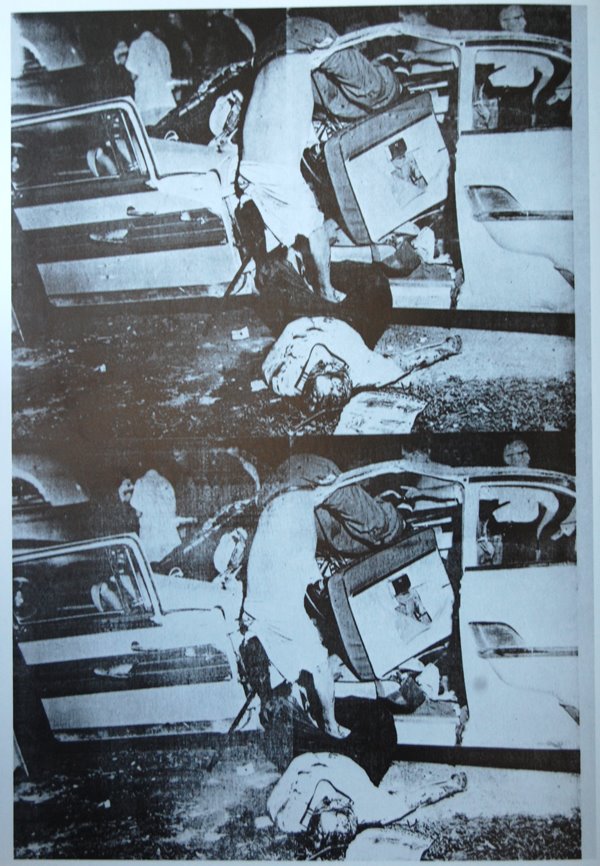The Fluxus manifesto underlines the need for a non-art reality. In other words, displaying art in ‘non-art’ environments and using ‘non-art’ materials to create art. The influence of Dadaism shows itself clearly here. The use of object and the everyday takes art out of the art world and into the world of human experience. This is where the abject comes in. Dadaism allowed abject art to form itself into a movement, largely stemming from Antonin Artaud’s ‘Theatre of Cruelty’ which, as with the abject movement, aimed to shatter our pre-conceived notions of reality by looking at ‘those elements...that are deemed impure or inappropriate for public display or discussion'(http://www.tate.org.uk/collections/glossary/definition.jsp?entryId=7) by society; what Julia Kristeva in her ‘Powers of Horror’ (1980) calls the ‘symbolic order’. And often it takes this out of the quiet halls of the white cube and into the public eye, through the medium of performance.
Abject Art: Repulsion and Desire
Try and deny it. You’re walking along the street and two cars collide. You stop and stare. Through concern, but also because of that other thing you don’t want to admit; a fascinated curiosity. 8.6 million People watched the episode of top gear airing Richard Hammond’s already famous car crash. I was one of them. It’s something Andy Warhol quite succinctly put his finger on in his Death and Disaster series.
Drama and horror form a sort of romance in our minds that is expressed in the nature of abject art. I’m not saying that this kind of curiosity is something we should be ashamed of. It is more than natural because of what it represents; something so tangibly real and horrifying that it forces us to shine a light on our own mortality: ‘the eruption of the real into our lives’. Julia Kristeva focuses on the example of encountering a corpse (something I have personally experienced). You’re encountered with nothing when there should be something. It is what Kristeva describes as ‘death infecting life’, an ‘otherness’ from which, Kristeva argues we distance ourselves. We remove ourselves from the things that don’t fit into the ‘symbolic order’. Our instinctual drives, our ID as Freud labels it, for example us as sexual beings. Our mortality which means we will one day die and rot. As Zizek says, ‘dirt stands in as truth’, even if it’s not necessarily a truth we want to face. The abject has no respect for boundaries.
As such it could be interpreted as merely seeking to shock. Abject art may never get away from the question, ‘what is the difference between abjection and sensationalism?’ However it could be argued that conjuring up shock or fear is an unavoidable bi-product when dealing with the notion of the taboo . Particularly as performance is such a large part of the abject movement, creating an immediacy that is very in-your-face when the materials for performance are blood and shit. Using these materials means the artist must know they are going to shock, even to offend, but not for the sake of making money. Quite the opposite; for the sake of the avant-garde, and to accompany the radical politics of the 1960s. To bring to the forefront the ideas and art of marginalised artists and groups, such as women, who are a very interesting group within abjection, for example Carolee Schneemann, Ana Mendieta, and later on Helen Chadwick. Although more a part of the fluxus movement, Yoko Ono too deals with feminist issues through the medium of performance.
In abject art there seems to have been particular focus on the vulnerability, sexuality and the ‘taboo’ nature of flesh and the naked body, for example in Schneemann's 'Meatjoy', where naked performers dance and writhe in paint, blood and animal carcasses. This theme perhaps stems from this notion of protest coming from the 60s, or of the atmosphere of rebellion in the 70s with the popularisation of punk, and the feminist movement. The best way to describe this is to look at some of the images. The Whitney museum’s title for an exhibition, and the origin of the movements name, ‘Abject Art: Repulsion and Desire’ seems apt.
Film still from Un Chien andalou (1929) Luis Buñuel and Salvador Dali
Piss Flowers (1991) Helen Chadwick
Meat Joy (1964) Carolee Schneemann





